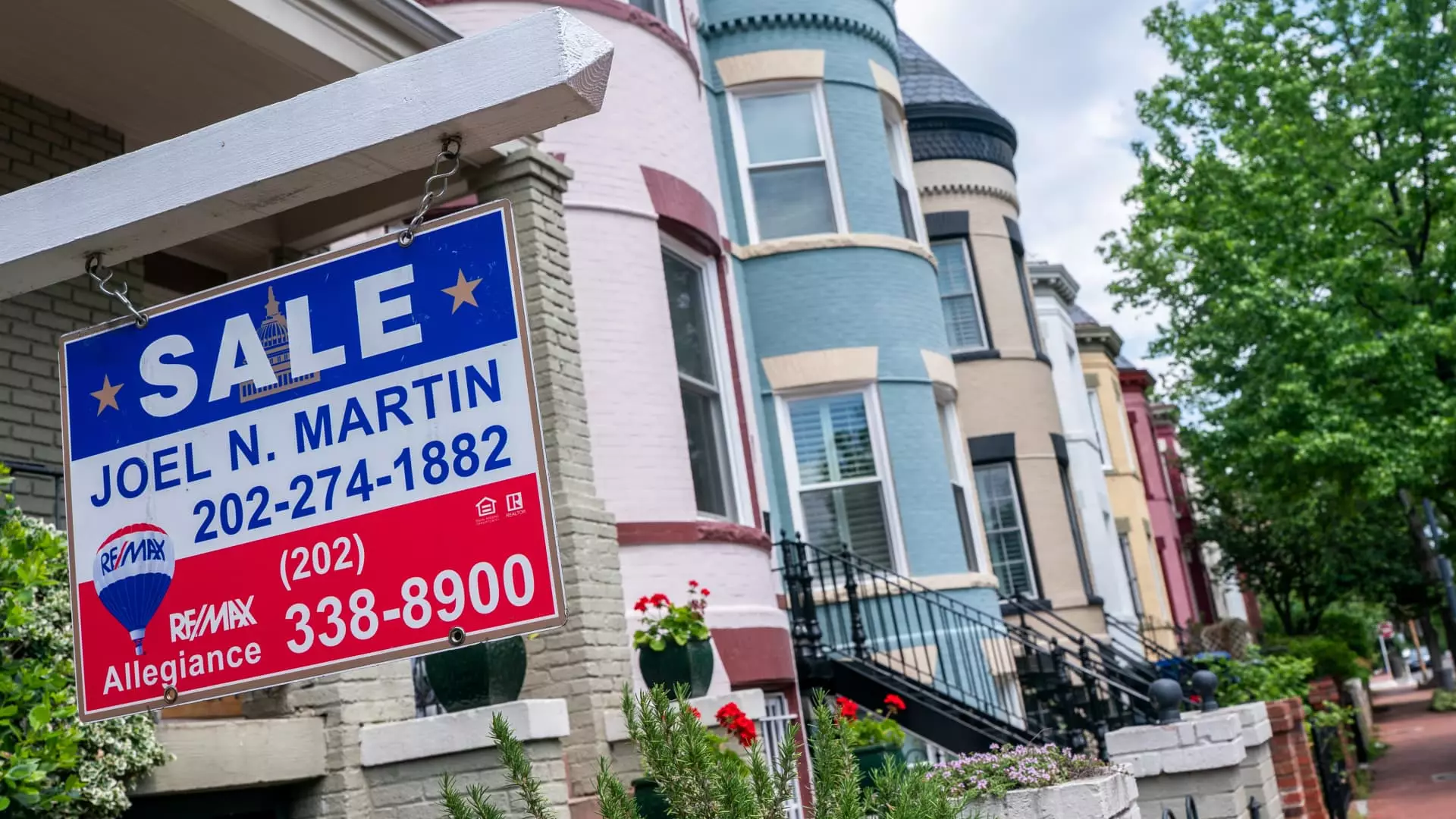The spring housing market is grappling with an alarming stagnation, as high interest rates and an undeniable lack of consumer confidence conspire to create a toxic mix for potential buyers and sellers alike. In April, the National Association of Realtors reported a disheartening 0.5% dip in the sales of previously owned homes compared to March, reaching an annualized rate of just 4 million units. This sobering statistic marks the slowest pace for April sales since the dark days of 2009. Disappointingly, sales also fell by 2% from the previous year, contradicting the anticipated expectation of a 2.7% gain. The figures reflect a grim reality: many of these contracts were likely signed months earlier, indicating a significant lag behind the swiftly evolving market dynamics, especially as mortgage rates surged in April.
As the chief economist of the NAR, Lawrence Yun aptly pointed out, the present state of the housing market is reminiscent of a quagmire, with home sales operating at a mere 75% of pre-pandemic activity levels despite the so-called ‘recovery’ seen through the addition of seven million jobs in the economy. This discrepancy highlights the pent-up demand that remains unfulfilled and underscores the fragility of consumer trust in the housing market. With mortgage rates still hovering at elevated levels, the release of this demand hangs in uncertainty.
Inventory: A Double-Edged Sword
While the inventory of available homes has jumped by an impressive 9% month over month, reaching a staggering 1.45 million homes for sale, this surge might lead some to believe that buyers have the upper hand. However, this glimmer of hope is overshadowed by the stark reality that we are still beneath the balanced market threshold of six months’ supply. The current average of 4.4 months’ supply is a welcome change from last year’s 3.5-month supply, but it is far from a panacea for the challenges buyers face in today’s market landscape.
The increased inventory has begun to have a cooling effect on prices, albeit in a rather muted manner. The median price of an existing home reached a record high of $414,000 in April. However, the year-over-year appreciation rate is sluggish at just 1.8%, the lowest rate since July 2023. This slow growth in prices signifies a cooling market and should provide an opportunity for negotiation—but only for those brave enough to engage in such a tumultuous environment.
Buyer Behavior and Market Dynamics
The psychological impact of the current market is palpable, as evidenced by the rising cancellation rates, which have surged to an alarming 7% in April, up from a stable average of 3% to 4%. First-time buyers, who traditionally comprise a core segment of the real estate market, accounted for 34% of sales, mirroring last year’s figures. Yet, the sense of urgency that typically accelerates first-time purchases appears to have waned, as potential buyers continue to assess the precarious waters of the housing market.
The higher-end housing market, in stark contrast to its mid- and low-end counterparts, remains more resilient. Sales of homes exceeding $1 million saw a notable 6% increase from last year. However, Yun pointed out that even this segment is experiencing diminishing gains, a reflection of the broader economic insecurities, including a recent upheaval in the stock market. This disparity in sales dynamics exemplifies the growing rift within the housing market, where affordability continues to be a critical barrier for middle-class buyers.
The Road Ahead: A Liberal Perspective on the Crisis
From a liberal standpoint, it is critical to acknowledge the systemic issues at play within the housing market that perpetuate inequality and hinder equitable access to homeownership. The current landscape, riddled with high mortgage rates and growing consumer skepticism, disproportionately affects first-time buyers and low-income families. Meanwhile, wealthier buyers continue to thrive in a market that privileges those with substantial resources, creating a vision of an American dream that is increasingly unattainable for average citizens.
It is imperative that policymakers prioritize housing affordability and stability. They must consider innovative solutions such as leveraging federal assistance programs and incentivizing affordable housing development to ensure that the path to homeownership is not just a privilege for the few, but a right accessible to all deserving Americans. Addressing these systemic challenges is not merely an option but a necessity if we ever hope to restore confidence in the housing market and foster a truly inclusive economy.

